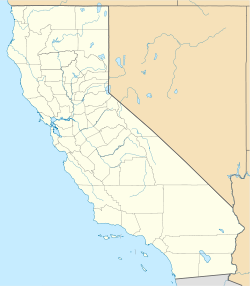Calvary Presbyterian Church | |
 | |
| Location | 2501–2515 Fillmore St., San Francisco, California |
|---|---|
| Coordinates | 37°47′34″N122°26′1″W / 37.79278°N 122.43361°W |
| Area | 0.5 acres (0.20 ha) |
| Built | 1901 |
| Built by | J.H. McKay |
| Architect | McDougall Brothers |
| Architectural style | Late 19th And 20th Century Revivals, Edwardian |
| NRHP reference No. | 78000755 [1] |
| Added to NRHP | May 3, 1978 |
Calvary Presbyterian Church is a historic Presbyterian church in San Francisco, California located in Pacific Heights at the corner of Fillmore Street and Jackson Street, and is a congregation that is part of the Presbyterian Church (USA).
The present building was built in 1901 and features Late 19th And 20th Century Revival architecture and an Edwardian style. The building was added to the National Register of Historic Places in 1978.



